Potrebujeme váš súhlas na využitie jednotlivých dát, aby sa vám okrem iného mohli ukazovať informácie týkajúce sa vašich záujmov. Súhlas udelíte kliknutím na tlačidlo „OK“.
ASTM D4809-13
Standard Test Method for Heat of Combustion of Liquid Hydrocarbon Fuels by Bomb Calorimeter (Precision Method)
Automaticky preložený názov:
Štandardná skúšobná metóda pre spalné teplo z kvapalných uhľovodíkových palív podľa kalorimetra bomby (Precision Method)
NORMA vydaná dňa 1.5.2013
Informácie o norme:
Označenie normy: ASTM D4809-13
Poznámka: NEPLATNÁ
Dátum vydania normy: 1.5.2013
Kód tovaru: NS-28684
Počet strán: 10
Približná hmotnosť: 30 g (0.07 libier)
Krajina: Americká technická norma
Kategória: Technické normy ASTM
Kategórie - podobné normy:
Anotácia textu normy ASTM D4809-13 :
Keywords:
aviation turbine fuels, bomb calorimeter, heat of combustion, hydrocarbon fuels, ICS Number Code 75.160.20 (Liquid fuels)
Doplňujúce informácie
| Significance and Use | ||||||||||||||||||||||||||||
|
5.1 The heat of combustion is a measure of the energy available from a fuel. A knowledge of this value is essential when considering the thermal efficiency of equipment for producing either power or heat. 5.2 The mass heat of combustion, that is, the heat of combustion per unit mass of fuel, is measured by this procedure. Its magnitude is particularly important to weight-limited vehicles such as airplanes, surface effect vehicles, and hydrofoils as the distance such craft can travel on a given weight of fuel is a direct function of the fuel's mass heat of combustion and its density. 5.3 The volumetric heat of combustion, that is, the heat of combustion per unit volume of fuel, can be calculated by multiplying the mass heat of combustion by the density of the fuel (mass per unit volume). The volumetric heat of combustion, rather than the mass heat of combustion, is important to volume-limited craft such as automobiles and ships, as it is directly related to the distance traveled between refuelings. |
||||||||||||||||||||||||||||
| 1. Scope | ||||||||||||||||||||||||||||
|
1.1 This test method covers the determination of the heat of combustion of hydrocarbon fuels. It is designed specifically for use with aviation turbine fuels when the permissible difference between duplicate determinations is of the order of 0.2 %. It can be used for a wide range of volatile and nonvolatile materials where slightly greater differences in precision can be tolerated. 1.2 In order to attain this precision, strict adherence to all details of the procedure is essential since the error contributed by each individual measurement that affects the precision shall be kept below 0.04 %, insofar as possible. 1.3 Under normal conditions, the test method is directly applicable to such fuels as gasolines, kerosines, Nos. 1 and 2 fuel oil, Nos. 1-D and 2-D diesel fuel and Nos. 0-GT, 1-GT, and 2-GT gas turbine fuels. 1.4 Through the improvement of the calorimeter controls and temperature measurements, the precision is improved over that of Test Method D240. 1.5 The values stated in SI units are to be regarded as standard. No other units of measurement are included in this standard. 1.6 This standard does not purport to address the safety concerns, if any, associated with its use. It is the responsibility of the user of this standard to establish appropriate safety and health practices and determine the applicability of regulatory limitations prior to use. For specific warning statements, see Section 7, 10.6, A1.7.1 and Annex A3. |
||||||||||||||||||||||||||||
| 2. Referenced Documents | ||||||||||||||||||||||||||||
|
Podobné normy:
Historická
1.5.2011
Historická
1.10.2010
Historická
1.12.2012
Historická
1.5.2011
Historická
1.10.2010
Historická
15.11.2013
Odporúčame:
Aktualizácia technických noriem
Chcete mať istotu, že používate len platné technické normy?
Ponúkame Vám riešenie, ktoré Vám zaistí mesačný prehľad o aktuálnosti noriem, ktoré používate.
Chcete vedieť viac informácií ? Pozrite sa na túto stránku.


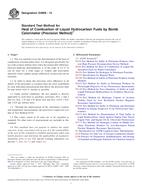
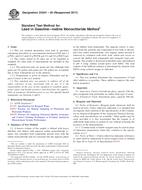 ASTM D3341-05(2011)..
ASTM D3341-05(2011)..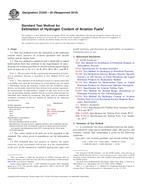 ASTM D3343-05(2010)..
ASTM D3343-05(2010)..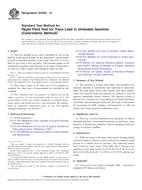 ASTM D3348-12
ASTM D3348-12 ASTM D3605-00(2011)..
ASTM D3605-00(2011).. ASTM D3606-10
ASTM D3606-10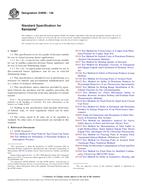 ASTM D3699-13b
ASTM D3699-13b
 Cookies
Cookies
